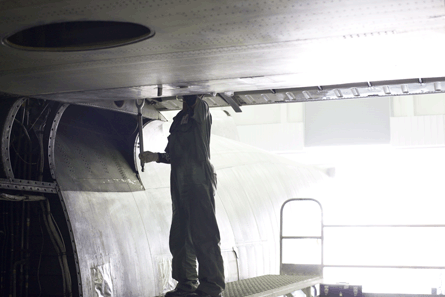Some of the signs outside its complex next to Abu Dhabi's international airport still read "Gulf Aircraft Maintenance Company", but the former GAMCO - now renamed Abu Dhabi Aircraft Technologies (ADAT) - has shed all other associations with its former parent, Gulf Air.
Caught in limbo when Abu Dhabi broke its association with the former four-nation airline to launch its own flag carrier, Etihad, in 2003, the region's leading full-service maintenance specialist had to rapidly reinvent itself under new owner Abu Dhabi state-owned investment house Mubadala.
Its biggest challenge has been that Etihad's young fleet had, until recently, not been a major generator of maintenance work. That is changing. ADAT has signed a five-year support deal with its neighbouring airline and the oldest of Etihad's 42 aircraft are now beginning to be scheduled in for C checks. The next two years will see a significant rise in heavy maintenance on the Etihad fleet, says chief executive John Byers.
 |
|---|
© ADAT |
Although Etihad is ADAT's biggest customer, Byers is keen to ensure the business secures a small number of "cornerstone" clients rather than piecemeal work from lots of airlines. "The 80/20 rule is good," he says. About half its remaining customers come from Europe and half from the region. They include Qatar Airways, Air Arabia, parcel company DHL and Thomas Cook Airlines.
Byers says Abu Dhabi's midway position between Europe and Asia - in terms of pricing as well as geography - gives it an instant advantage. "We are able to offer a similar product to Europe, but at better rates. China may be cheaper, but a European operator has to factor in the ferrying costs for the aircraft."
Like all employers in the Gulf, ADAT is adjusting to the downturn in the commercial airline sector, although Byers says he does not expect the impact to be really felt until the middle of this year, following the northern winter when most airlines schedule in their heavy maintenance.
Although recruitment has slowed, Byers says the business is still taking on "people with specialist skills". Finding them is easier, despite local competition from the in-house maintenance departments of the Gulf's major airlines, Emirates and Qatar Airways. "There are not the job opportunities that there were 12 to 18 months ago," he says. "There are some damn good people on the market."
"We are able to offer a similar product to Europe, but at better rates"John Byers - ADAT chief executive |
|---|
Most of ADAT's technicians come from the Indian subcontinent and the Philippines, but many of its senior engineers are recruited from the West. The rise in the value of the dirham is making it more attractive to expatriates from Australia, New Zealand, South Africa and the UK particularly, says Byers.
ADAT is expanding its infrastructure, with a hangar capable of housing three Airbus A380s due to open in 2010, well ahead of when Etihad and Qatar Airways acquire their superjumbos. An agreement with Rolls-Royce to provide on-wing maintenance for the engine maker's customers in the region should also bring in business. A similar partnership agreement with General Electric is being negotiated.
Military work makes up a growing 15% of ADAT's revenues, and this could be enhanced by a planned joint venture between Mubadala and Sikorsky to set up a military maintenance centre in Abu Dhabi to service, among others, the UAE's current order for 10 S-70A Black Hawk helicopters.
Although not directly related to ADAT, Mubadala's other aerospace activities could see a surge in demand for highly skilled professionals in Abu Dhabi over the next few years. At last year's Farnborough air show, the company unveiled plans to build a composite aerostructures plant in the emirate to open in 2010. The factory will manufacture components such as spoilers and flap-track fairings for Airbus and Alenia Aeronautica, but Mubadala expects it to "evolve into developing primary structures", including outboard flaps and horizontal and vertical stabilisers. It will initially employ almost 400 people.
Source: Flight International
















